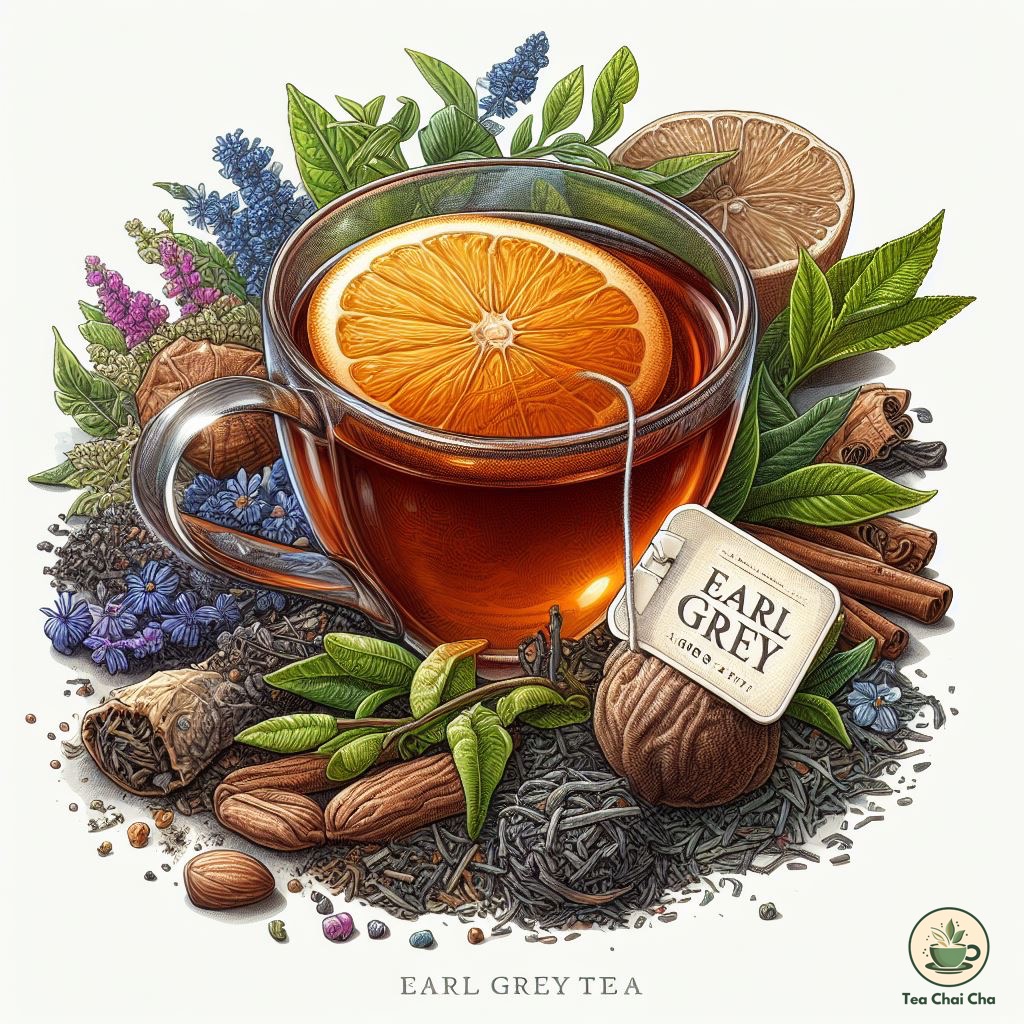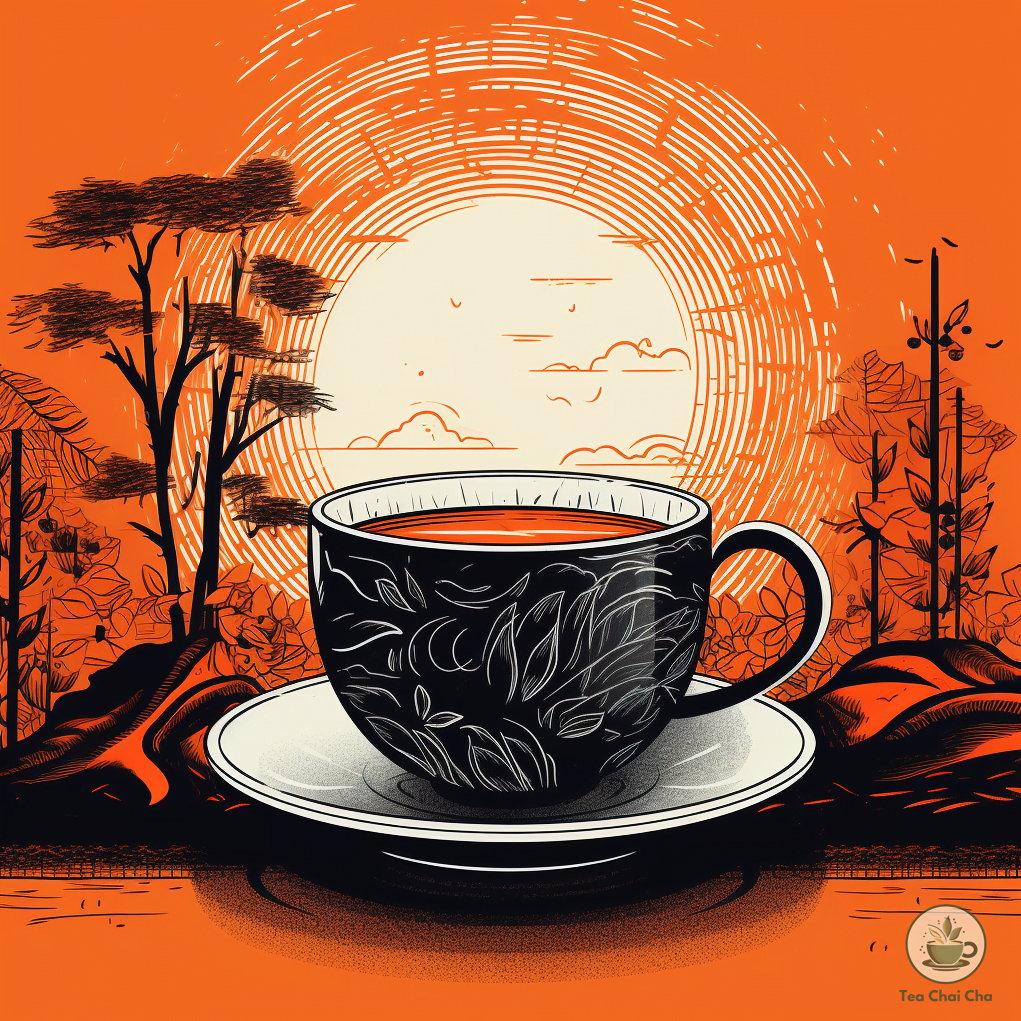Named after the 19th-century British Prime Minister, Charles Grey, Earl Grey tea has a history as rich and diverse as its own unique flavor profile.
Earl Grey’s allure goes beyond its alluring aroma and comforting warmth.
But how much caffeine is in Earl Grey tea?
Earl Grey tea has 50 mg of caffeine per 8 ounce serving.
Want to learn more about its caffeine? Let’s do it!
What is Caffeine?
Caffeine’s is the most popular mind-blowing buzz you can get, found in over 60 plants, even in those tea leaves that make your Earl Grey rock.
It is a stimulant as it kicks drowsiness to the curb and brings back your A-game.
It hooks up with your brain, blocking adenosine’s receptors, and you’re wide awake and laser-focused.
But remember, too much of a good thing is not cool. Keep it real, and moderation is the name of the game.
Does Earl Grey Tea Have Caffeine?
Yes, Earl Grey tea does contain caffeine. Earl Grey tea is made from black tea leaves that are flavored with bergamot oil, which gives it its distinct citrusy aroma and taste.
Black tea naturally contains caffeine.
Since Earl Grey is made from black tea, it also retains the caffeine content.
If you are looking for a caffeine-free option, you may want to consider herbal teas instead.
How Many mg Caffeine in Earl Grey Tea
Earl Grey tea contains around 50 mg of caffeine in an 8-ounce serving.
When you sip on Earl Grey tea, steeped just right for three minutes, you’re getting a sweet caffeine boost of around 30-50 milligrams.
However, it’s important to note that the caffeine content can vary between different brands and blends of Earl Grey tea.
For example, Twinings Earl Grey tea may have almost three times less caffeine than Bigelow Earl Grey tea if both are steeped for the same time.
So, if you’re looking for a milder caffeine experience, Twinings might be a suitable choice.
According to various sources, the caffeine content of different types of teas per 8-ounce (237-ml) serving is as follows:
Earl Grey Tea is a smooth black tea jazzed up with bergamot oil for that extra flavor kick.
Now, when it comes to caffeine, it’s sitting right in the middle, not too strong, not too weak, just hitting that sweet spot!

What Factors Influence the Caffeine Content in Earl Grey Tea?
The caffeine content in Earl Grey tea isn’t a fixed value.
It’s an interplay of several variables that can dramatically alter your brew’s caffeine levels.
Here’s a comprehensive look at these influencing factors:
-> Type and Quality of Tea Leaves: The type and quality of black tea leaves in Earl Grey can play a big part in caffeine levels.
Those young, tiny leaves pack a punch, more caffeine than their older, bigger pals.
-> Water Quantity and Temperature: The amount and temperature of water totally rule the caffeine game.
Boiling water for five minutes means double the kick compared to hot water for three minutes.
-> Steeping Time: Time’s the trick! Steep those leaves for 10 minutes, and you will get four times the caffeine hit versus a quick 2-minute dip.
-> Additional Ingredients: The ingredients you choose to add to your Earl Grey tea can impact the perceived or actual caffeine content.
Milk or cream can dilute the caffeine concentration, while adding sugar or honey might enhance caffeine’s stimulating effects or mask its bitterness.
Does Earl Grey Tea Have More Caffeine Than Coffee?
No, Earl Grey tea generally has less caffeine than coffee.
While the caffeine content can vary depending on factors like brewing time and the specific brand or blend, on average, an 8-ounce cup of brewed Earl Grey tea contains around 30-50 milligrams of caffeine.
In contrast, an 8-ounce cup of brewed coffee typically contains 95 milligrams or more of caffeine.
So, coffee generally has a higher caffeine content than Earl Grey tea.
However, it’s worth noting that caffeine content can vary significantly depending on the type of tea and the method of preparation.
Also read – How to Make Assam Tea: A Rich and Malty Brew

Amount of Caffeine in Matcha Tea vs. Earl Grey Tea
Matcha tea generally contains more caffeine than Earl Grey tea.
The caffeine content in beverages can vary based on factors such as brewing time, temperature, and the amount of tea used, but on average, here’s a comparison:
Matcha Tea
Matcha is a type of powdered green tea made from shade-grown tea leaves. It is known for its vibrant green color and earthy flavor.
On average, one teaspoon (about 2 grams) of matcha contains approximately 70 milligrams of caffeine.
However, some sources suggest that it could contain even higher amounts, up to 100 milligrams per teaspoon.
Earl Grey Tea
Earl Grey tea is made from black tea leaves flavored with bergamot oil. Black tea usually contains less caffeine than matcha.
On average, an 8-ounce (240-milliliter) cup of Earl Grey tea contains around 30-50 milligrams of caffeine content.
Measuring Caffeine in Earl Grey Tea
With this understanding, you might be wondering how you can measure or estimate the caffeine content in your Earl Grey tea.
Here are a few methods:
-> Check the Label: You know some of them Earl Grey tea brands drop info about the caffeine buzz per serving on their packs or websites, right?
But, real talk, that is not always on point because of how they measure and do their math and all that.
-> Use a Caffeine Meter: If you really want to know the real deal, snag yourself a caffeine meter gadget.
It works like magic with a chemical reaction, spilling the beans on caffeine content in your cuppa.
But fair warning, they can be a bit pricey and might not cover every caffeine-causing factor.
-> Try an Online Calculator: Some websites estimate the caffeine content of beverages based on parameters like the type and amount of tea, water, and other ingredients.
However, their reliability might be questionable as they often use generic or outdated data.
Benefits and Drawbacks of Caffeine in Earl Grey Tea
Indulge in the captivating allure of Earl Grey tea while exploring its enticing benefits and potential drawbacks. Let’s savor the complexity of this beloved brew!
Health Benefits of Caffeine in Tea
The Good Side of Caffeine: Besides keeping you alert, caffeine in moderate amounts can provide several health benefits:
- Enhances Mental Alertness: Caffeine can improve cognitive function and reduce feelings of tiredness.
- Aids Weight Loss: Some studies suggest that caffeine can boost metabolism and fat burning.
- Boosts Physical Performance: Caffeine can enhance physical endurance and performance during exercise.
Potential Side Effects of Caffeine in Tea
Going overboard on caffeine can bring about some not-so-nice consequences:
- Restlessness and Insomnia: Slamming too much caffeine disrupts sleep and causes restlessness.
- Increased Heart Rate: Overloading on caffeine can send your heartbeat into a wild rhythm.
- Upset Stomach: Some people might find caffeine doesn’t sit right with their stomach.
Just remember, everyone’s caffeine radar is unique. Stay tuned to your body and tweak your intake accordingly.
Also read – Which Tea Has the Most Caffeine?

How to Control Your Earl Grey Tea Caffeine Intake
Controlling the caffeine content in your Earl Grey tea is surprisingly simple. Here’s a step-by-step guide:
- Monitor Your Brewing Time: The longer you steep your tea, the more caffeine is released. A shorter brewing time means less caffeine.
- Watch Your Tea Amount: Using less tea will naturally result in a less caffeinated brew.
- Try Different Tea Blends: If you love Earl Grey but want to reduce your caffeine intake, consider trying a blend with less caffeine, like green or white tea.
Remember, experimenting with your brew can lead to exciting new flavors while helping you control your caffeine intake.
Caffeine in Other Teas
Frequently Asked Questions (FAQs)
How much caffeine is in a cup of Earl Grey tea?
An average cup of Earl Grey tea contains about 30-50 milligrams of caffeine.
How does the caffeine content in Earl Grey tea compare to coffee?
A cup of Earl Grey tea has less caffeine than a cup of coffee, which typically contains 95-200 milligrams of caffeine.
Are there any decaffeinated Earl Grey teas available?
Yes, there are decaffeinated versions of Earl Grey tea available, which have most of the caffeine removed.
Does the brewing time affect the caffeine content in Earl Grey tea?
Yes, the longer the tea is steeped, the more caffeine is extracted.
What are the potential side effects of too much caffeine from Earl Grey tea?
Potential side effects of consuming too much caffeine can include restlessness, insomnia, increased heart rate, and an upset stomach.
Does Earl Grey tea keep you awake?
Earl Grey tea can potentially keep you awake due to its caffeine content. Drinking it late in the day might disrupt your sleep. Caffeine, a stimulant, boosts energy and alertness, and takes around 4-6 hours to metabolize in your body. So, for a good night’s sleep, avoid Earl Grey tea at least 6 hours before bedtime.
